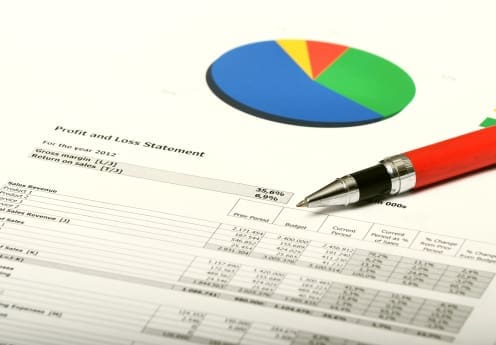A profit and loss statement is a vital financial document that gives you a clear picture of your business growth. Knowing how to prepare and efficiently analyze a profit and loss statement will enable you to swiftly summarize and interpret your business revenues, costs, and expenses over time.
At any stage of your business, it’s good to reflect on the progress of your business. With a profit and loss statement, you can weed out unnecessary costs, reflect on your revenues, and make the right decisions. Additionally, most investors, stakeholders, and creditors, will depend on your profit and loss statement before commenting on their investment.
If you are wondering how to analyze your profit and loss statement efficiently, worry not, as this article will provide you with fundamental techniques to guide you.
What is a Profit and Loss Statement?
A profit and loss (P&L) statement is a financial document that summarizes the organization’s revenues, costs, and expenses incurred during a specific period.
Most organizations prepare profit and loss statements quarterly or the entire fiscal year. A P&L statement provides crucial information about an organization’s ability or inability to increase profit through improving their income, reducing costs, or both.
Moreover, investors and managers use a P&L statement to assess the organization’s financial health, progress and make decisions and policies. Every organization that wants to evaluate its progress must prepare three annual or quarterly financial statements- The P&L, cash flow, and balance sheet statement.
Due to its importance, there are a high number of companies or agents that have specialized in preparing profit and loss statements for organizations. If you are looking for a leading and reliable company to prepare a P&L statement and help you analyze it, you can always depend on a1corp.com.sg.

Types of Profit and Loss (P&L) Statements
Before we look at how you can analyze your profit and loss statement, let’s first look at two major types prepared by most organizations. The two kinds of P&L statements are based on the method used in preparing them.
-
Cash Method
The cash method is also known as the accounting method. This method is mostly used when there is cash flow in and out of the organization.
A cash method is the simplest method that takes a record of the revenue earned and cash paid out. For example, a business can record all transactions as revenue when revenue is received and as a liability when expenses are incurred to pay bills and other liabilities.
This technique is common in small and medium businesses and individuals who wish to manage their finances efficiently.

-
Accrual Method
The Accrual accounting method records all revenue earned and what the company expects to earn in the future. For example, a company doing supplies to clients will include the expected revenue in the P&L statement even if it hasn’t received the payments.
Similarly, the company also contains expenses it expects to accrue in the future. For example, a company can consist of its costs for wages as liabilities even before paying for them.
In short, this method record revenue and expenses after an exchange has happened rather than when revenue is received or expenses are paid.
Here are Ways to Analyze Profit and Loss Statement Efficiently
-
Sales
Sales are perfect indicators to help you quickly evaluate the business’s health. Using sales, you can compare the number of sales done in one year with others if you are analyzing an annual P&L statement or one quarter with others in a quarterly statement.
The comparison can quickly tell you whether the change is negative or positive. A positive change means good progress, while a negative change is a red flag to check.

-
Calculated Metrics
When you want to track the progress of your business, you must set some metrics or percentage ranges. They will help you evaluate your business’ health.
When the profit of your business is within the percentage or metrics you set, you know your business health is proper, and vice versa. Your business should aim at least to have a profit range of 10% to 20%. You should calculate three primary metrics when analyzing your P&L statement; Net profit margin, operating expense ratio, and gross margin.
-
Income Taxes
Every business is entitled to pay taxes to the state and local authorities. This a vital expenditure you must consider when checking on your business progress. Taxes can affect your business revenue and profit.
Higher taxes rates can significantly lower your income and profitability and vice versa. When filing your business taxes, you must record the correct taxable income. For example, you are supposed to file your profit instead of the total revenue received.

-
Common Size Analysis
Common size analysis converts every line of items in your profit and loss statement into percentages of the total revenue. This is a simple way to evaluate your business progress and outcome compared to others in the same industry.
-
Cost of Goods sold
The cost of goods sold is significant when calculating your business profit. When the cost of goods sold is less, there will be an increased profit. The price of goods sold includes Salesforce costs, labor, distribution, and material cost.
Conclusion
The main goal of a business is to make a profit. A healthy business makes progress in terms of increased profits rather than losses. The best way to evaluate your business profitability is by analyzing the profit and loss statement. This quickly gives you a clear picture of your business and guides you in making the right decisions to boost your business performance.
Therefore, besides the cash flow and balance sheet, a profit and loss statement is a fundamental financial statement that helps to reflect your business performance within a specific period.
